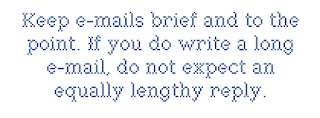Stop-Motion Lesson Idea (10/3)
 |
| Source: https://youtubevideosforkids.com/lego-jail-break-lego-prison-break-lego-stop-motion/ |
Number in group and age: 25 8th grade students
Activity: Students will work in groups to create a stop-motion animation to raise awareness about an issue they feel strongly about
Objective: Students will learn that art can raise awareness of important social, political, cultural, economic, or environmental issues through creating a stop-motion animation in small groups about an issue of their choice using cameras, computers, and various art materials, figurines, or objects.
Materials: Cameras or iPads on tripods, computers to edit animations and add sound if desired, paper, drawing, and painting materials, clay, found objects, toys, or figures
Time Allotted: 6-7, 50 minute class periods (flexible depending on length of animation) - room for dialogue, collaboration in groups to plan idea, creation of props and backgrounds, making of stop motion, editing, and critique
Recently when I've been playing with stop motion and watching other stop-motion videos, I feel as though many of them are meant to be comical. The medium does lend itself well to comedy since you can play off a character's more jerky movements and the idea of little figures moving in space. I came up with this lesson idea to challenge students to use the medium to make a more serious statement and go beyond using stop-motion to create a short, light-hearted story. By using stop-motion and their own characters and sets to discuss an issue, they can make an engaging video that is both interesting to watch while also raising awareness about something serious to them. This lesson plan assumes students have some prior experience with stop-motion, and a teacher should allow plenty of time for students to experiment more freely with the medium and process.
I think stop-motion is also a great lesson for differentiated learning in integrated classrooms. I'm taking a class with Stephanie about inclusive learning in arts classrooms, and I presented a stop-motion lesson to show how it can be adapted in a classroom of students with diverse learning needs. Firstly, stop-motion animations can be made in a variety of materials. Students who have sensory issues may choose to avoid working with clay and volunteer to make the backgrounds of the scenes using drawing materials. Stop-motion is also accessible for this reason: it can be made into a group project in which everyone has a role in its creation. Students with disabilities can be placed in groups with their typically developing peers, and groups will learn skills of collaboration and cooperation. Students can divide up tasks while making the sets and props (deciding who will work on which part) and during the filming. One student may be in charge of pressing the button to snap a photo, other students may have the roles of moving the objects to create the action, while another student may serve as the director to make sure the action is carried out and all hands are clear when the photo is taken. Stop-motion animation may also seem complex for all students who are first learning the process, so I made this visual cheat sheet with the cues "Move, Clear, Snap, Repeat!" to remind students of the steps they should follow to create the animation.
Overall, the whole stop-motion process can build many skills, both technical and social skills such as collaboration. It also leaves so many choices up to the students in terms of which materials they wish to work with and how they might add sound, titles, or effects to their piece at the end.


Comments
Post a Comment